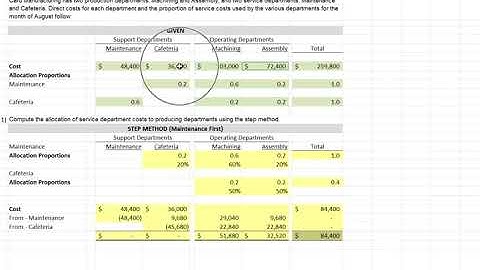Variable Selling & Administrative Costs variable Factory Overhead Costs Show (A) Yes No b)No yes c)Yes Yes
8.Which of the following would appear on both the budgeted income statement and on the schedule of expected cash disbursements for operating expenses? (A) Depreciation expense (B) Rent expense (C) Sales commission expense (D) Both B and C 9.Which of the following is not an underlying assumption of the cost-volume-profit graph? (A) Expenses are categorized into fixed and variable (B) Revenues and expenses are linear over the relevant range (C) Efficiency and productivity will be unchanged (D) Sales mix will not be constant
Variable Costing
c. normal costing d. none of the above
c. selling price d. unit production
a. Variable overhead budget variance b. Variable overhead efficiency variance c. Fixed overhead budget variance d. Fixed overhead volume variance
c. Fixed overhead volume variance d. No fixed overhead
c. a)decrease b)increase d. a)decrease b)no effect
c. Direct costing d. Variable costing
c. absorption costing d. direct costing
c. relevant costing d. prime costing
c. an irrelevant cost d. a period cost
c. P 70, d. P 90, (Items 37 – 39 are based on the following information) Last year, Zsa Zsa Company manufactured 20,000 units and sold 15,000 units. Production costs for the year were as follows: Direct Material P 170, Direct Labor 110, Variable Manufacturing Overhead 200, Fixed Manufacturing Overhead 240, Sales totaled P825,000 for the year, variable selling and administrative expenses totaled P108,000 and fixed selling and administrative expenses totaled P165,000. There were no beginning inventories. Assume that direct labor is a variable cost.
c. P 25. d. P 19.
c. P 248, d. P 180,
Total Fixed Costs incurred P 100, Total Variable Costs incurred 50, Total Period Costs incurred 70, Total Variable Period Costs incurred 30, Units produced 20, Units sold 12, Unit sales price P If Blue Company had used variable costing for its first year of operations, how much income (loss) before income taxes would it have reported? a. (P6,000) b. P 54, c. P 26, d. P 2, (Items 41 – 45 are based on the following information) TONDO COMPANYIncome Statement For the month ended January 31, 2016 Sales (P10/unit) P 900, Variable Costs: Variable Cost of Goods Sold: Beginning Inventory P 125, Variable cost of goods manufactured 400, Total goods available for sale P 525, Ending Inventory (75,000) Variable Cost of Goods Sold P 450, Variable Selling Expense: 90,000 (540,000) Contribution Margin: P 360, Fixed Costs: Manufacturing P 240, Selling & Administrative 90,000 (330,000) Profit P 30, During January 2016, Tondo Company manufactured a total of 80,000 units.
c. Absorption Costing d. Throughput Costing
c. 49,500 units d. 41,250 units
c. P 750, d. P 700,
c. P 75, d. P 60,
c. P 30,000 loss d. P 60,000 profit What is inventoried under variable costing?Variable Costing. Method. Applies all direct costs, fixed overhead, and variable manufacturing overhead to the cost of a product. Only variable costs are applied to the cost of a product; fixed overhead costs are expensed in the period in which they occur. Use.
What costs are treated as Inventoriable costs under the variable costing method?Inventoriable costs, also known as product costs, refer to the direct costs associated with the manufacturing of products and in getting them ready for sale. Often, inventoriable costs include direct labor, direct materials, factory overhead, and freight-in.
What costs are inventoried under absorption costing?Absorption costing will result in two categories of fixed overhead costs: those attributable to the cost of goods sold, and those attributable to inventory.
Which of the following are product costs under variable costing?Under variable costing, product costs consist of direct materials, direct labor, and variable manufacturing overhead.
|

zusammenhängende Posts
Werbung
NEUESTEN NACHRICHTEN
Werbung
Populer
Werbung

Urheberrechte © © 2024 ketiadaan Inc.


















